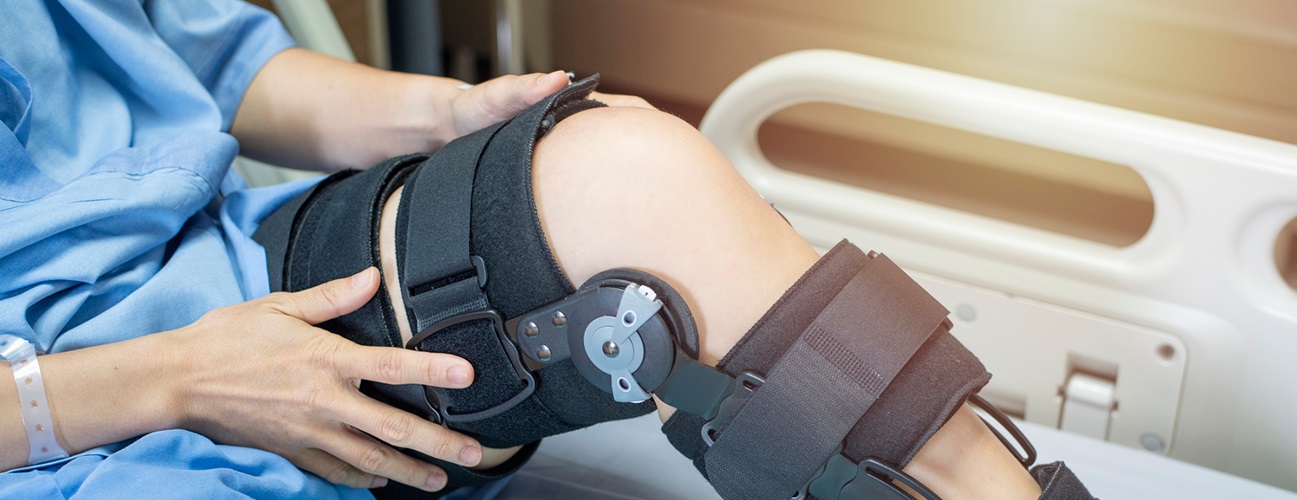Ligament injuries, often caused by sports-related activities or traumatic incidents, can be debilitating, impacting an individual’s mobility and overall quality of life. In recent years, arthroscopic surgeries have emerged as a groundbreaking approach to treating ligament injuries. In this comprehensive guide, we will explore the significance of arthroscopic surgeries, their applications in ligament injury treatment, and how this minimally invasive technique is revolutionizing orthopedic care. We can discuss more about “A Breakthrough in Ligament Injury Treatment” in this article.

- 1. Understanding Ligament Injuries, A Breakthrough in Ligament Injury Treatment
- 2. Traditional vs. Arthroscopic Approaches
- 3. Common Ligament Injuries Treated with Arthroscopy
- 4. Advantages of Arthroscopic Ligament Surgery
- 5. The Arthroscopic Procedure: Step by Step
- 6. Recovery and Rehabilitation
- 7. Dr. Gautam Gupta’s Expertise in Arthroscopic Ligament Surgery
- 8. Conclusion
1. Understanding Ligament Injuries, A Breakthrough in Ligament Injury Treatment
Ligaments are tough, fibrous tissues that connect bones to each other, providing stability and support to joints. Ligament injuries, such as tears or strains, commonly occur in joints like the knee, shoulder, and ankle. These injuries can result from sudden twists, overextension, or high-impact activities. We can see more about “A Breakthrough in Ligament Injury Treatment” in this article.
2. Traditional vs. Arthroscopic Approaches
Traditional Surgery:
Historically, the treatment of ligament injuries often involved traditional open surgeries. These procedures required larger incisions, leading to extended recovery times, increased pain, and a higher risk of complications.

Arthroscopic Surgery:
Arthroscopy, on the other hand, is a minimally invasive surgical technique that has revolutionized ligament injury treatment. This approach involves making small incisions through which a tiny camera, known as an arthroscope, is inserted. The surgeon can visualize the interior of the joint on a monitor and perform precise, targeted procedures with specialized instruments.
3. Common Ligament Injuries Treated with Arthroscopy
Anterior Cruciate Ligament (ACL) Tears:
ACL tears, often prevalent in athletes, can significantly impact knee stability. Arthroscopic ACL reconstruction is a common procedure where the torn ligament is replaced with a graft, promoting healing and restoring joint stability.
Read More:
Rotator Cuff Tears:
Arthroscopic surgery is widely employed for rotator cuff repairs in the shoulder. This technique allows surgeons to access and repair damaged tendons and ligaments with minimal disruption to the surrounding tissues.

Meniscus Tears:
Meniscus tears in the knee can cause pain and limited range of motion. Arthroscopic meniscus repair or partial meniscectomy is often performed to address these injuries, promoting faster recovery and preserving as much healthy tissue as possible.
Ankle Ligament Tears:
Arthroscopic techniques are increasingly used to treat ligament injuries in the ankle. This approach allows for precise visualization and repair of damaged ligaments, leading to improved outcomes. We can check more about “A Breakthrough in Ligament Injury Treatment” in this article.
4. Advantages of Arthroscopic Ligament Surgery
Minimally Invasive:
One of the primary advantages of arthroscopic surgery is its minimally invasive nature. Smaller incisions result in less trauma to surrounding tissues, reducing pain and accelerating recovery.
Faster Recovery:
Patients undergoing arthroscopic ligament surgery typically experience shorter recovery times compared to traditional open procedures. The reduced disruption to tissues contributes to quicker healing.
Reduced Scarring:
The smaller incisions used in arthroscopy result in minimal scarring, providing not only aesthetic benefits but also reducing the risk of complications related to extensive scarring.
Precise Visualization:
Arthroscopic procedures offer surgeons a close-up, high-definition view of the affected joint. This precision allows for accurate diagnosis and targeted treatment of ligament injuries.
Lower Infection Risk:
With smaller incisions and reduced exposure of internal tissues, the risk of postoperative infections is significantly lower in arthroscopic surgeries.

5. The Arthroscopic Procedure: Step by Step
Anesthesia:
The patient is placed under either general or local anesthesia, depending on the specific procedure and patient factors.
Incision Placement:
Small incisions, typically less than half an inch in size, are made around the joint. These serve as entry points for the arthroscope and surgical instruments.
Arthroscopic Inspection:
The arthroscope is inserted into one of the incisions, providing a clear view of the joint’s interior on a monitor. This allows the surgeon to assess the extent of the ligament injury.
Treatment:
Specialized instruments are introduced through the other incisions to perform the necessary repairs. In the case of ligament reconstruction, grafts may be used to replace the damaged ligament. We can find more about “A Breakthrough in Ligament Injury Treatment” in this article.
Closure:
Once the procedure is completed, the incisions are closed with sutures or adhesive strips. Dressings or bandages are applied, and the patient is monitored as they awaken from anesthesia.

6. Recovery and Rehabilitation
Immediate Postoperative Period:
Patients are monitored in a recovery area as the effects of anesthesia wear off. Pain management and initial physical therapy exercises may begin during this period.
Postoperative Care:
Patients receive detailed instructions for at-home care, including wound care, medication management, and guidelines for gradually resuming activities.
Physical Therapy:
Rehabilitation is a crucial component of arthroscopic ligament surgery. Physical therapy sessions are tailored to each patient’s specific needs, focusing on restoring strength, flexibility, and joint function.

Follow-Up Appointments:
Regular follow-up appointments with the orthopedic surgeon are scheduled to monitor progress, assess healing, and make any necessary adjustments to the rehabilitation plan. We can discuss and find more about “A Breakthrough in Ligament Injury Treatment” in this article.
7. Dr. Gautam Gupta’s Expertise in Arthroscopic Ligament Surgery
Dr. Gautam Gupta, a highly skilled orthopedic surgeon, specializes in arthroscopic surgeries for ligament injuries. With a commitment to patient-centered care and cutting-edge techniques, Dr. Gupta is dedicated to providing optimal outcomes for individuals seeking relief from ligament-related issues.
Bone Doctor Gautam Powered By Argusdna
Dr. Gautam Gupta[M.S. (ORTHO)]
Fellowship Shoulder & Knee Surgery (Germany & Netherland) Ex-Assistant Professor (W.B.M.E.S)
Sports Injury Consultant (Indian Football Association, W.B., Chapt) Reg. No. 63422 (WBMC),
Phone No. : +91 62917 71106
Email Id : contact@bonedoctorgautam.com
Bone And Joint Clinic – Best Joint Replacement Clinic | Best Orthopedic Clinic in Kolkata
:591, Tagore Park Rd, Tagore Park, Kasba, Kolkata, West Bengal 700039
Link:https://g.page/r/CbQzKPsoxiZVEBM/
Dr Gautam Gupta – Best Knee Replacement Surgeon | Best Hip Replacement Surgeon | Best Sports Injury Surgeon in Kolkata: 591 Laskar Hat Road Near Tagore Park Auto Stand, Kolkata, West Bengal 700039 Link: https://g.page/r/Cc2iL0CE1P6tEBM/
8. Conclusion
Arthroscopic surgery has ushered in a new era in the treatment of ligament injuries, offering patients a minimally invasive alternative with numerous benefits. From ACL tears to rotator cuff injuries, this breakthrough technique provides precise diagnosis and targeted treatment, ultimately leading to improved patient outcomes. Dr. Gautam Gupta’s expertise in arthroscopic ligament surgery positions him as a trusted partner for individuals seeking advanced and effective orthopedic care.
In conclusion, arthroscopic surgeries have transformed the landscape of ligament injury treatment, offering a less invasive, more efficient, and patient-friendly approach. As technology continues to advance, the future of orthopedic care holds the promise of further innovations, providing even more options for individuals seeking relief from ligament-related challenges.






